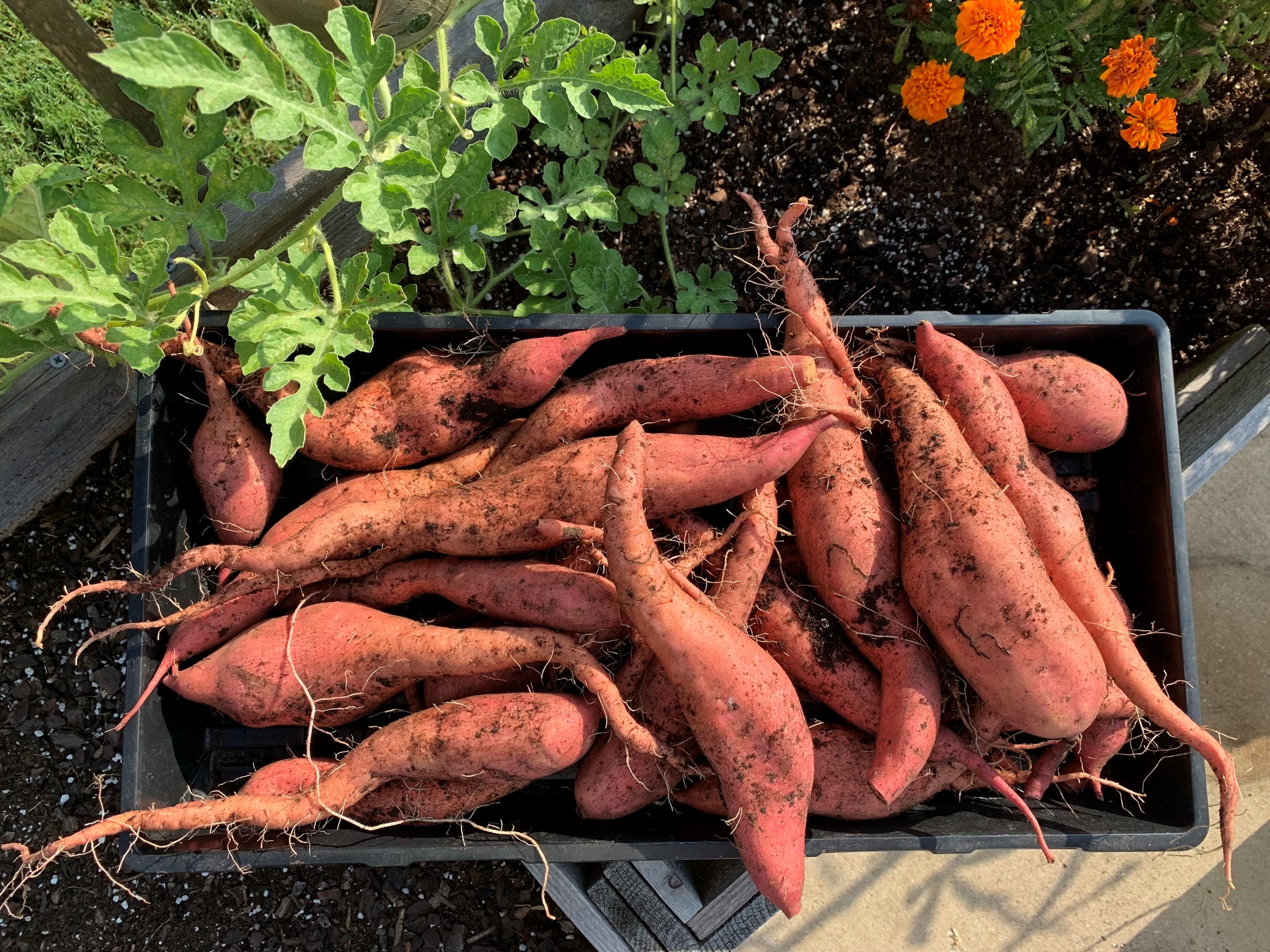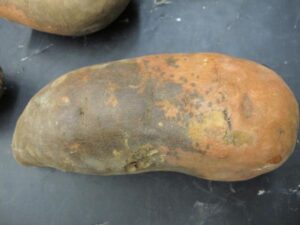Growing sweet potatoes is one of life’s simple pleasures. The slips (starter vines) are easy to grow and, once planted, can turn into a bounty of delicious tubers. But what if, after patiently waiting 90 to 120 days until harvest, you finally dig up the soil only to discover that the potatoes have split or cracked! The first question you would probably ask is, what happened? The second question, are they safe to eat? In this quick article, you will learn the answer to these important questions and more!
4 Reasons Sweet Potatoes Develop Cracks
1. Watering Issues
The primary reason sweet potatoes split or crack is because of improper watering. Most often, it is a result of too much water, whether from rain or irrigation, rather than too little. The fissures, also known as growth cracks, are more likely to occur if your area has experienced dry conditions followed by excessive watering. This is because when there is not enough moisture in the soil, the sweet potato skins will dry out and harden a bit. When the soil is hydrated, the potato will take up water quickly, causing it to rupture. The solution is to provide adequate water on a consistent basis. Keep in mind that if you grow in raised beds or containers, the soil will dry out quicker than if the tubers were growing in the ground.
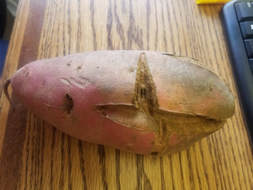
Pay special attention to watering the plants toward the end of the growing season. As the vines begin to turn yellow and die, you may be tempted to water the plants more often in an attempt to revitalize them. However, too much water at the end of the growing season can be problematic because the thicker skin on the mature tubers will split as the potato absorbs the water. The solution is to stop watering about three to four weeks before you plan to harvest the potatoes. The resulting dryer soil not only helps prevent the potato from cracking, but it also makes digging out the potatoes much easier.
This article contains affiliate links. If you make a purchase using one of these links, I will receive a very small commission at no additional cost to you, and it will help me maintain this website. Rest assured, I only recommend products I actually like!
2. Too Much Fertilizer
Sweet potatoes require fertilizer that is higher in phosphorus and potassium than nitrogen. This is the fertilizer I use. But too much fertilizer will encourage rapid growth that will cause the potato to grow faster than the skin, resulting in fissures. On the other hand, too much nitrogen can cause the vines to go into overdrive while the roots will not reach their full potential. (You can learn more about fertilizers and NPK-nitrogen, phosphorus, potassium- in this helpful article.)
3. Insect Damage
Smaller cracks can be a result of insect damage. For example, the larvae of pests, like weevils and flea beetles, will burrow into sweet potatoes just below the skin. As they eat through the potato, they will leave tunnels and shallow cracks in the potatoes. You can find out more information on how to protect your harvest from weevils and flea beetles by clicking on the links.
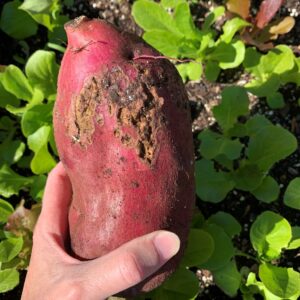
4. Disease Damage
Another reason sweet potatoes may crack is due to diseases. Sweet potato feathery mottle virus, for example, is a plant disease that causes tubers to develop cracks. Signs vary somewhat depending on variety, but leaves are generally marked by feathery patterned chlorosis, which may have a purple border.
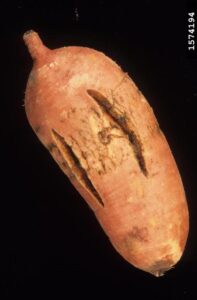
Can You Eat Cracked or Split Potatoes?
Now that we know the main reasons why sweet potatoes crack and split, the question we want to answer next is, are the damaged tubers edible? If the potatoes only have growth cracks, then yes, you can most definitely eat them! You can cut away the parts that look less desirable and prepare them as you normally would. If, however, they are oozing, have mold growing on them, or present some other symptom indicative of a viral, bacterial, or fungal infection, you may not want to eat them.
Want more information on how to grow sweet potatoes, including what to do about pests and diseases? Click here and scroll through the article titles.
Thank you for reading this article! If you found it interesting or helpful, please consider sharing it with others via email and social media!
